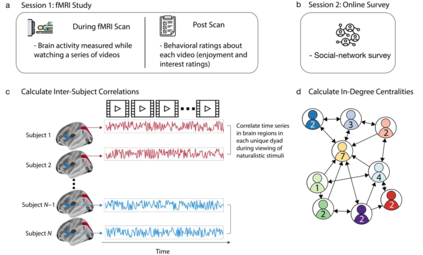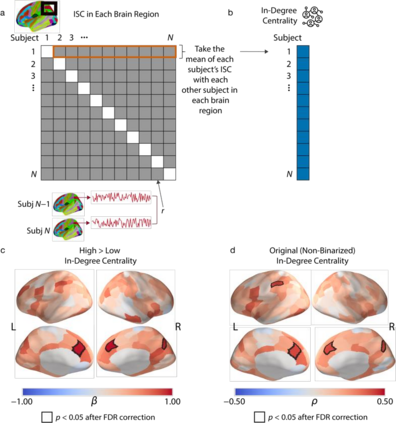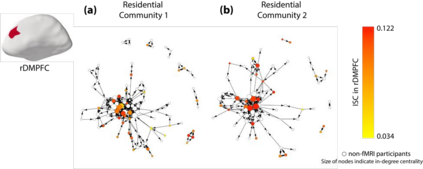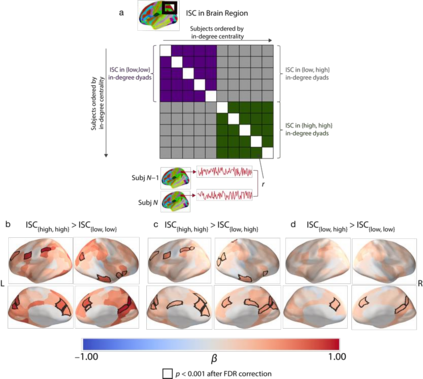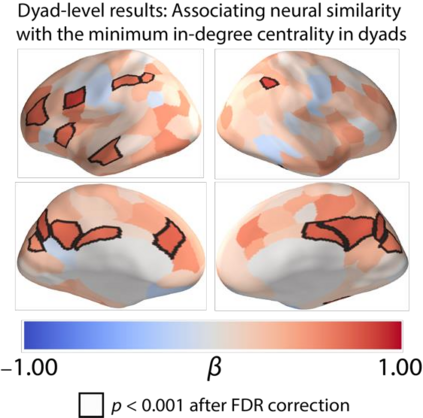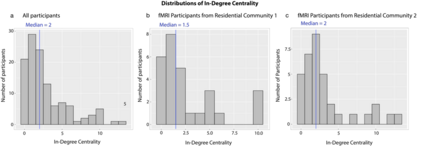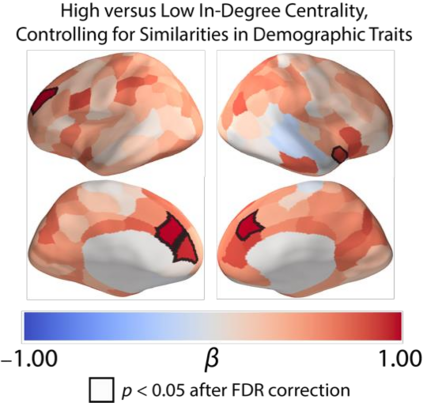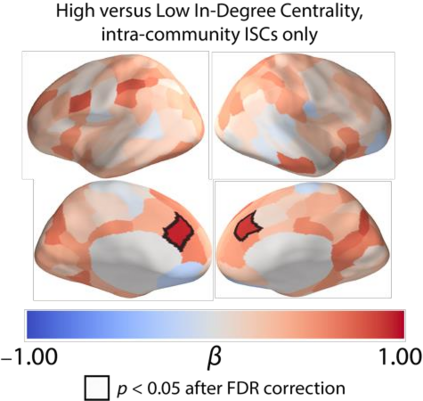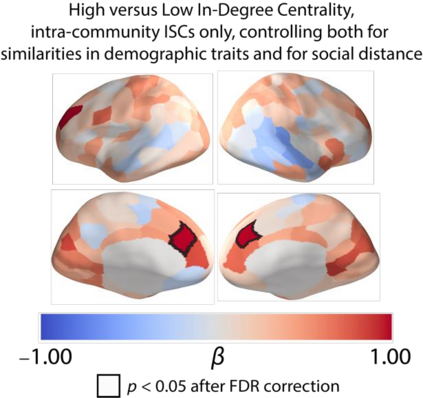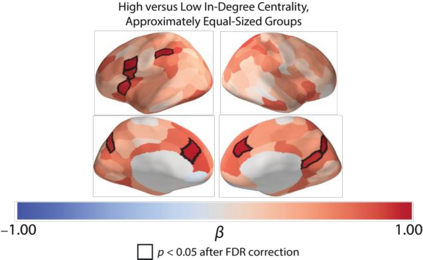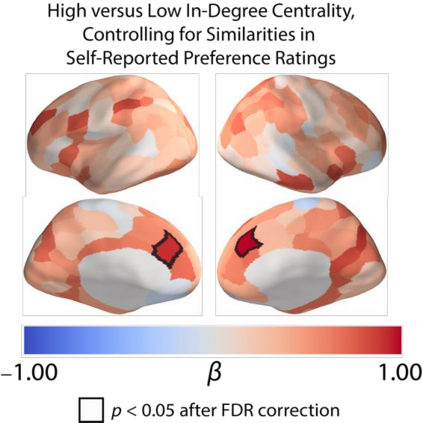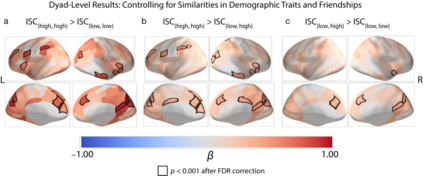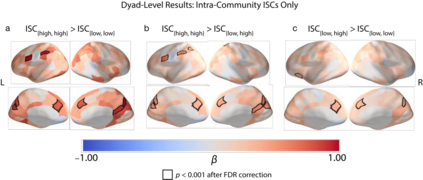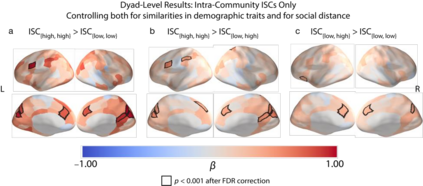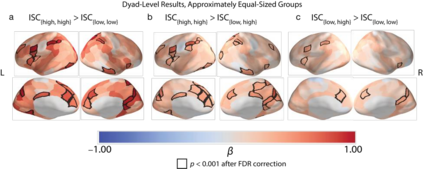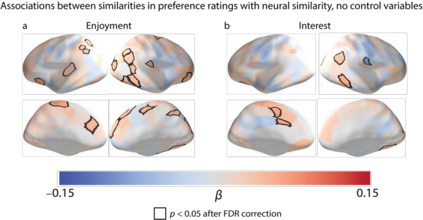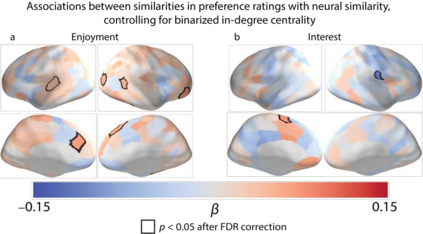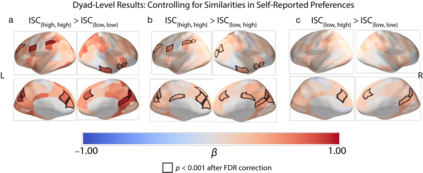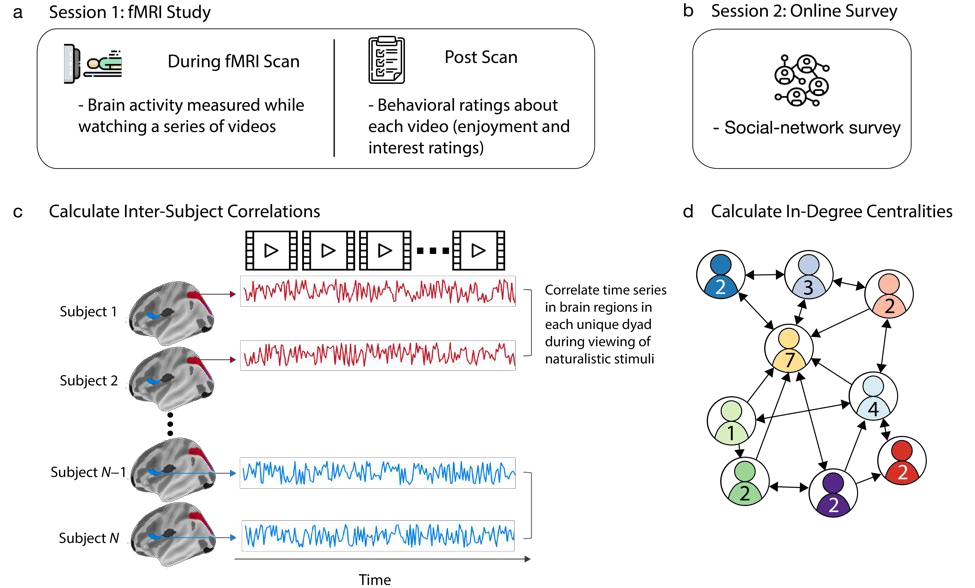People differ in how they attend to, interpret, and respond to their surroundings. Convergent processing of the world may be one factor that contributes to social connections between individuals. We used neuroimaging and network analysis to investigate whether the most central individuals in their communities (as measured by in-degree centrality, a notion of popularity) process the world in a particularly normative way. We found that more central individuals had exceptionally similar neural responses to their peers and especially to each other in brain regions that are associated with high-level interpretations and social cognition (e.g., in the default-mode network), whereas less-central individuals exhibited more idiosyncratic responses. Self-reported enjoyment of and interest in stimuli followed a similar pattern, but accounting for these data did not change our main results. These findings suggest that highly-central individuals process the world in exceptionally similar ways, whereas less-central individuals process the world in idiosyncratic ways.
翻译:人们对周围环境的关心、解释和反应方式各不相同。对世界的一致处理可能是促进个人之间社会联系的一个因素。我们利用神经成像和网络分析来调查其社区中最核心的个人(按程度中心度衡量,一种受欢迎的概念)是否以特别规范的方式处理世界。我们发现,较集中的个人对同龄人,特别是对与高层次解释和社会认知有关的大脑区域(例如,默认模式网络中)的相互神经反应非常相似,而较不集中的个人则表现出更多的特异性反应。自我报告对刺激的享受和兴趣遵循类似的模式,但对这些数据的核算并没有改变我们的主要结果。这些调查结果表明,高度集中的个人以非常相似的方式处理世界,而较不集中的个人则以特异的复杂方式处理世界。

